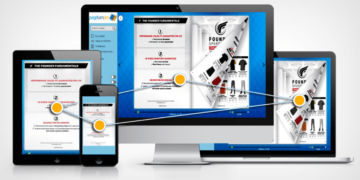Introduction
The Growing Demand for Mobile App Developers
In 2025, mobile applications continue to dominate the digital landscape, powering everything from social media platforms and online banking to e-commerce stores and food delivery. With over 7 billion smartphone users globally, the demand for mobile app development has reached an all-time high.
As more startups, enterprises, and solo entrepreneurs aim to launch apps that cater to niche markets or offer disruptive services, the need for skilled mobile developers has surged. This demand naturally affects the cost of hiring developers, which has become a crucial factor in project planning and budgeting.
Whether you’re building an MVP or scaling a global app, knowing what to expect in terms of cost is essential. And spoiler alert, developer rates vary significantly depending on region, experience level, project type, and development model.
Why Developer Costs Continue to Rise in 2025
Several key trends are driving up developer rates in 2025:
- Global Competition for Talent: More companies are remote-first and willing to hire globally, driving up rates in traditionally lower-cost regions.
- Increased Technical Complexity: AI, real-time analytics, and blockchain integration demand highly skilled developers.
- Higher User Expectations: Users expect flawless performance, sleek design, and constant updates, requiring top-tier engineering talent.
- Post-COVID Digital Acceleration: Businesses across all sectors are prioritizing mobile-first strategies, increasing the need for reliable developers.
As a result, hiring the right developer is both a challenge and an investment. Let’s break down exactly what it costs to hire a mobile app developer in 2025—and what influences that number.
Key Factors That Affect Mobile App Developer Rates
Type of App (Simple vs. Complex)
Not all apps are created equal. A simple to-do list app is miles apart from a real-time video conferencing platform or an Uber-like delivery service. Naturally, the more complex the app, the more expensive the development.
- Simple apps with basic screens and offline capabilities may require 100–300 hours.
- Moderate apps (like e-commerce or chat apps) require 400–800 hours.
- Complex apps (such as marketplaces, multi-role apps, or enterprise systems) can exceed 1000 hours.
More time = higher cost, especially when features like real-time GPS tracking, third-party integrations, and advanced security are involved.
Platform (iOS, Android, or Cross-Platform)
Platform choice significantly impacts development cost.
- iOS apps are developed using Swift or Objective-C, often commanding slightly higher rates.
- Android apps use Kotlin or Java and may require more testing due to the diversity of Android devices.
- Cross-platform apps (e.g., Flutter, React Native) offer cost savings by using a single codebase for both platforms, reducing time and expense by 30–50%.
Unless you’re targeting a specific OS, cross-platform is the most cost-effective choice for startups and MVPs in 2025.
Developer Skill Level (Junior vs. Senior)
Experience matters. A senior developer can build a robust, scalable app faster, but will charge more per hour. Meanwhile, junior developers are cheaper but may take longer and require guidance.
- Junior Developers (0–2 years): $20–$50/hour
- Mid-Level Developers (2–5 years): $40–$80/hour
- Senior Developers (5+ years): $70–$150+/hour
For mission-critical projects, investing in a senior or lead developer can save you money long-term by reducing rework and bugs.
Location and Regional Differences
Where your developer is located has a huge impact on cost. Developers in North America and Western Europe charge more than those in Asia or Eastern Europe, often for similar skills.
Next, we’ll break down average hourly rates by region.
Average Hourly Rates by Region in 2025
North America
North American developers (U.S. and Canada) remain the most expensive, but also offer top-tier quality, native language fluency, and access to high-end enterprise tools.
- Junior: $50–$75/hour
- Mid-Level: $80–$120/hour
- Senior: $130–$200/hour
Best for: Fintech apps, healthcare apps, corporate MVPs with regulatory requirements.
Western Europe
Countries like the UK, Germany, France, and the Netherlands offer a balance between quality and cost.
- Junior: $40–$60/hour
- Mid-Level: $70–$100/hour
- Senior: $100–$150/hour
Best for: European companies needing GDPR compliance or local timezone collaboration.
Eastern Europe
Eastern Europe remains a top outsourcing destination in 2025 due to highly skilled developers and competitive rates.
- Junior: $20–$40/hour
- Mid-Level: $40–$60/hour
- Senior: $60–$100/hour
Top countries: Ukraine, Poland, Romania, Serbia
Best for: Startups looking for affordable quality and a Western work ethic.
Asia and India
Asian countries offer the most affordable rates, though quality can vary based on the agency or freelancer’s portfolio.
- Junior: $10–$25/hour
- Mid-Level: $25–$45/hour
- Senior: $45–$70/hour
India, the Philippines, and Vietnam are popular for MVPs, maintenance work, and cross-platform development.
Latin America and Africa
With growing tech ecosystems, Latin America and parts of Africa are emerging outsourcing hubs in 2025.
- Junior: $15–$30/hour
- Mid-Level: $30–$50/hour
- Senior: $50–$80/hour
Popular countries: Brazil, Mexico, Nigeria, Kenya
Best for: U.S. startups seeking similar time zones with lower costs.
Cost by Engagement Model
Freelancers
Hiring freelancers is often the most budget-friendly option for startups and small projects. Freelancers work independently and usually charge hourly or per-project rates. Platforms like Upwork, Fiverr, and Toptal make it easy to find vetted talent across skill levels.
Pros:
- Affordable rates
- Flexible schedules
- Great for quick or small projects
Cons:
- Limited availability for ongoing work
- No project management included
- Varying reliability
Typical Cost (Per Hour in 2025):
- Junior: $15–$35
- Mid-Level: $35–$60
- Senior: $60–$100+
Best for MVPs, bug fixes, and feature updates.
In-House Developers
Hiring in-house developers gives you complete control and better collaboration. It’s ideal for long-term projects or tech startups building proprietary apps.
Pros:
- Full commitment and accountability
- Better quality control and real-time feedback
- Easy integration with internal teams
Cons:
- High upfront cost (salaries, benefits, tools)
- Slower hiring process
- Not suitable for short-term needs
Typical Annual Salary in 2025 (U.S.):
- Junior: $60,000–$85,000
- Mid-Level: $85,000–$120,000
- Senior: $120,000–$180,000+
In-house hiring is great for enterprise teams and funded startups with long-term tech roadmaps.
Development Agencies
Agencies offer turnkey solutions, managing your project end-to-end with a dedicated team. They typically include designers, developers, QA testers, and a project manager.
Pros:
- One-stop shop for full development
- Professional workflows and deliverables
- Faster time to market
Cons:
- More expensive than freelancers
- Less flexibility in scope changes
- May have limited customization with pre-built templates
Cost for MVP (2025):
- Small agency (Asia/Eastern Europe): $10,000–$30,000
- Mid-size agency (U.S./EU): $30,000–$80,000
- Premium agencies: $100,000+
Best for startups wanting quick results without micromanaging the process.
Cost Breakdown by App Type
Basic Utility Apps
These include calculators, checklists, or flashlights—minimal UI and logic.
- Timeframe: 100–300 hours
- Cost Range: $5,000–$15,000
- Who It’s For: Solo founders, small businesses
Social Media or Messaging Apps
Apps like WhatsApp or Instagram need real-time messaging, user profiles, media sharing, and complex UI/UX.
- Timeframe: 500–1,000 hours
- Cost Range: $30,000–$80,000+
- Who It’s For: Startups, niche networks, community builders
E-Commerce and Marketplace Apps
These include product listings, shopping carts, order tracking, and payment systems—think Etsy, Amazon, or Shopify.
- Timeframe: 600–1,200 hours
- Cost Range: $40,000–$100,000+
- Who It’s For: Retailers, dropshippers, niche product marketplaces
On-Demand Delivery Apps (Uber, DoorDash clones)
Require customer, driver, and admin panels, real-time tracking, payments, and chat systems.
- Timeframe: 800–1,500 hours
- Cost Range: $50,000–$120,000+
- Who It’s For: Food delivery startups, taxi/ride-hailing apps, logistics platforms
Enterprise-Grade Custom Apps
Highly tailored apps for industries like healthcare, finance, or manufacturing with compliance needs, integrations, and complex workflows.
- Timeframe: 1,000–2,000+ hours
- Cost Range: $100,000–$500,000+
- Who It’s For: Corporations, funded tech companies, regulated sectors
How to Optimize Your Budget When Hiring
Outsourcing to Cost-Effective Regions
Hiring talent from regions like Vietnam, Eastern Europe, or Latin America can reduce development costs by up to 70%, without compromising on quality (if you vet properly).
Use platforms like:
- Toptal (premium talent)
- Upwork (freelancers/agencies)
- Clutch (agency directories)
Always review portfolios, interview candidates, and consider test projects before signing contracts.
Using the MVP Approach for Initial Launch
Building a Minimum Viable Product (MVP) allows you to:
- Validate your idea
- Test with early users
- Launch faster and cheaper
Focus on core features only. Skip the bells and whistles until you gain traction. This approach can cut your costs by 50% or more, making it easier to pivot or improve based on real feedback.
Leveraging Cross-Platform Development
Instead of building separate iOS and Android apps, use frameworks like:
- Flutter
- React Native
- Xamarin
These allow you to deploy to both platforms using a single codebase, saving time, money, and maintenance effort.
Hidden Costs to Watch Out For
Post-Launch Maintenance
After your app goes live, ongoing costs may include:
- Bug fixes
- Feature updates
- OS compatibility upgrades
- Server maintenance
Estimated cost: 15–20% of initial development annually
Backend Infrastructure and Hosting
Your app needs a server, database, and admin panel. Cloud services like AWS, Firebase, or DigitalOcean come with recurring costs.
Monthly hosting costs:
- Basic: $50–$200
- Moderate: $200–$1,000
- High traffic: $1,000+
Third-Party Services and APIs
You’ll likely integrate tools for:
- Payments (Stripe, Razorpay)
- Notifications (Firebase, Twilio)
- Analytics (Mixpanel, Amplitude)
- Maps (Google Maps API)
Some are free up to a limit; others charge per transaction, session, or user.
Always factor these into your budget before launch.
Conclusion
Hiring a mobile app developer in 2025 can cost anywhere from $5,000 to $500,000+, depending on your needs, platform, and who you hire. While the price tag may seem daunting, smart decisions—like starting with an MVP, outsourcing, or using cross-platform frameworks—can dramatically reduce your costs.
Whether you’re launching a side hustle or building the next big app, success starts with informed choices. Know your budget, prioritize features, choose the right talent, and watch your app idea become a reality.
FAQs
What’s the average cost to develop a mobile app in 2025?
A basic MVP costs $10,000–$30,000. More complex apps like Uber Eats clones or marketplaces may range from $50,000–$150,000+. Enterprise-grade apps can exceed $250,000.
Is it cheaper to hire freelancers or an agency?
Freelancers are generally cheaper and more flexible. Agencies cost more but offer full-service development with project management and testing.
How long does it take to build a mobile app?
Simple apps can be built in 1–3 months. Complex apps may take 6–12 months, depending on scope, features, and testing cycles.
Can I hire developers without technical knowledge?
Yes! Many agencies and freelancers work with non-technical founders. Just make sure to communicate your goals clearly and use project management tools.
What’s the best region to outsource mobile app development?
Top regions include India, Eastern Europe (Ukraine, Poland), Southeast Asia (Vietnam, Philippines), and Latin America (Brazil, Mexico) for quality development at competitive prices.


















